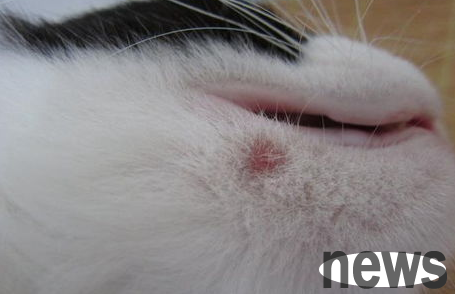Cats are one of the pets in many families. They are lively and cute by nature and are deeply loved by people. But sometimes, we will find that some unusual symptoms begin to appear on them, such as loss of hair and inflammation in the skin. At this...
Cats are one of the pets in many families. They are lively and cute by nature and are deeply loved by people. But sometimes, we will find that some unusual symptoms begin to appear on them, such as loss of hair and inflammation in the skin. At this time, we may need to consider the issue of fungal infection in cats. What is a cat fungal infection?

Fungal infection in cats is a skin disease caused by fungal infections that usually spreads in humid and warm places.
Fungi that cause fungal infection in cats include Microsporum and Trichophyton.
These fungi can grow and reproduce on cats' hair and skin, causing cats to experience varying degrees of symptoms.
Symptoms of fungal infection in cats There are many symptoms of fungal infection in cats, mainly manifested as round rashes on the skin, hair fall, skin itching, inflammation and desquamation, etc.
These symptoms may affect the cat's life and mobility to varying degrees.
How to prevent fungal infection in cats? In order to prevent fungal infection in cats, we need to take the following measures:
1. Keep the cat's environment clean and hygienic, especially where they often stay.
2. Regularly bathe and hair care for your cat, which helps remove fungi from the skin surface.
3. Check the cat's hair and skin. If any abnormalities are found, seek medical attention in time.
4. Avoid exposing cats to wild animals or other objects that may carry fungi.
If you find symptoms of fungal infection in your cat, you should seek medical attention as soon as possible.
If not treated promptly, fungal infections in cats may cause other serious health problems, such as the spread of the infection to the bones and internal organs.
Treatment of Fungal Infections in Cats Treatment methods for fungal infections in cats include topical and oral medications.
Topic drugs include ointments and liniments, which can be applied directly to the cat's skin.

Oral drugs include antifungal and antibiotics, etc., and need to be taken as recommended by the doctor.
During the treatment period, special attention should be paid to the cat's diet and living habits to ensure its health and recovery.
Summary Fungal infection in cats is a common skin disease that can have a certain impact on cats' health.
To prevent and treat cat fungal infections, it is necessary to maintain the cat's environmental hygiene, take regular baths and hair care, and pay attention to the cat's signs and behaviors.
At the same time, keep patience and attention during treatment to help cats recover in the best way.